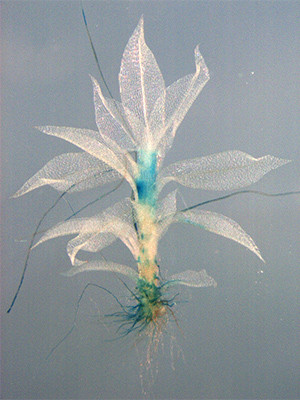Unravel the evolutionarily diverse mechanisms of plant morphology

Plant hormones were originally identified as low molecular weight substances that affect the growth and environmental responses of flowering plants. Research initially discovered auxin, cytokinin, gibberellin, abscisic acid and ethylene and afterwards found additional hormones, including jasmonic acid, strigolactones, the steroid hormone brassinosteroid and peptide hormones.
We wondered when in the evolutionary history of plants did these molecules begin to function as hormones? By investigating the hormone action and genome information of flowering plants (angiosperms), and also – stretching back across plant evolution – of gymnosperms, ferns, mosses and green algae, we can infer in which plants and in what way each hormone began to be used.
For example, we can infer that the actions of auxin and cytokinin became indispensable when plants began to grow on land and acquire more complex organs and tissues. Also, abscisic acid, important in environmental stress responses, has very little function in green algae, which live in water, but is thought to have assumed a role in stress responses when plants progressed onto land. What happened when plants began to grow on land and what genetic changes made this possible? Research using moss can approach this type of problem and is highly intriguing.
The picture shows our investigation of the role of auxin polarity delivery in Physcomitrella patens.
![Tomomichi Fujita Laboratory, Hokkaido University [ Plant Evolutionary and Developmental Biology ]](https://www.sci.hokudai.ac.jp/PlantSUGOIne_en/wp-content/themes/fujitalab-en/img/header-title.png)
